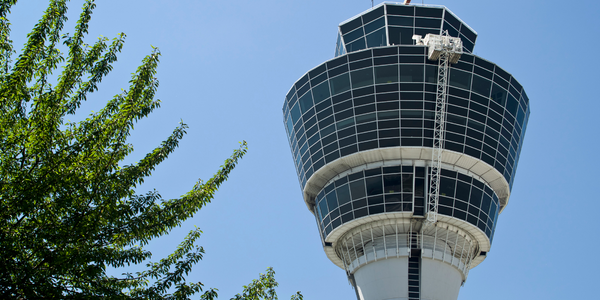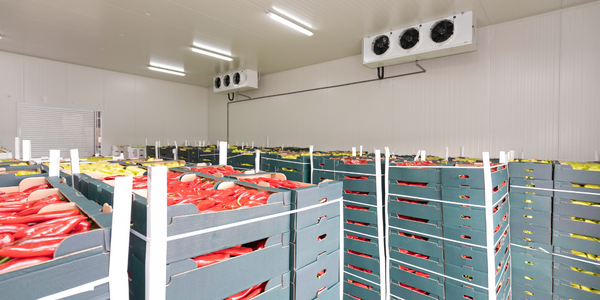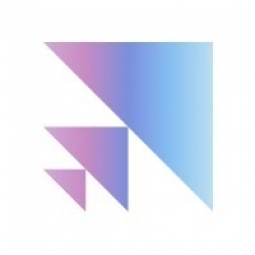Technology Category
- Analytics & Modeling - Machine Learning
- Cybersecurity & Privacy - Identity & Authentication Management
Applicable Industries
- Education
- Transportation
Applicable Functions
- Logistics & Transportation
Use Cases
- Tamper Detection
- Virtual Training
Services
- Training
About The Customer
Nuro is a robotics company based in Mountain View, CA, that aims to improve everyday life through robotics. The company's custom electric autonomous vehicles are designed to deliver the things people need, from produce to prescriptions, right to their homes. Nuro's R2 robot was the first completely autonomous, zero-occupant on-road vehicle approved for commercial delivery by the U.S. Department of Transportation. The company has partnered with brands like Domino's and FedEx and has piloted autonomous, eco-friendly local delivery for communities in Texas, Arizona, and California. Nuro's approach to building a custom-goods only vehicle allows it to prioritize safety innovations for vulnerable road users such as bikers and pedestrians.
The Challenge
Nuro, a robotics company specializing in autonomous vehicles for delivery services, faced a significant challenge in identifying infrequent but meaningful scenarios in their training data. The company's autonomous vehicles, designed to deliver goods from produce to prescriptions, needed to be able to identify and respond to a variety of obstacles, including pedestrians in unusual postures, animals, occluded and backlit pedestrians, and infrequently encountered vehicles such as excavators. However, these labels were not present in the ground truth of their training data. The company's internal tool was only able to identify a limited number of these scenarios, falling short of the thousands of images that needed to be identified and labeled for comprehensive training of their autonomous vehicles.
The Solution
Nuro turned to Nucleus, a tool that enables the company's Perception Team to collaborate and identify safety-critical edge cases in their training data. Nuro aimed to ingest a substantial portion of its training dataset into Nucleus to identify these rare edge cases from a massive collected dataset with minimal effort or intervention from its machine learning team. Nucleus' Object Autotag and data curation workflows allowed machine learning engineers to use a consistent platform for modeling tasks. Autotag enabled users to select unlabeled images of a certain category, and then using an internal model and its feature vectors, provide a set of similar images, suitable to be sent out for labeling with new class labels. This allowed the team to incorporate newly identified edge cases and re-train a new model in just a few days rather than over a week.
Operational Impact
Quantitative Benefit

Case Study missing?
Start adding your own!
Register with your work email and create a new case study profile for your business.
Related Case Studies.

Case Study
Airport SCADA Systems Improve Service Levels
Modern airports are one of the busiest environments on Earth and rely on process automation equipment to ensure service operators achieve their KPIs. Increasingly airport SCADA systems are being used to control all aspects of the operation and associated facilities. This is because unplanned system downtime can cost dearly, both in terms of reduced revenues and the associated loss of customer satisfaction due to inevitable travel inconvenience and disruption.

Case Study
IoT-based Fleet Intelligence Innovation
Speed to market is precious for DRVR, a rapidly growing start-up company. With a business model dependent on reliable mobile data, managers were spending their lives trying to negotiate data roaming deals with mobile network operators in different countries. And, even then, service quality was a constant concern.

Case Study
Digitize Railway with Deutsche Bahn
To reduce maintenance costs and delay-causing failures for Deutsche Bahn. They need manual measurements by a position measurement system based on custom-made MEMS sensor clusters, which allow autonomous and continuous monitoring with wireless data transmission and long battery. They were looking for data pre-processing solution in the sensor and machine learning algorithms in the cloud so as to detect critical wear.

Case Study
Cold Chain Transportation and Refrigerated Fleet Management System
1) Create a digital connected transportation solution to retrofit cold chain trailers with real-time tracking and controls. 2) Prevent multi-million dollar losses due to theft or spoilage. 3) Deliver a digital chain-of-custody solution for door to door load monitoring and security. 4) Provide a trusted multi-fleet solution in a single application with granular data and access controls.

Case Study
Vehicle Fleet Analytics
Organizations frequently implement a maintenance strategy for their fleets of vehicles using a combination of time and usage based maintenance schedules. While effective as a whole, time and usage based schedules do not take into account driving patterns, environmental factors, and sensors currently deployed within the vehicle measuring crank voltage, ignition voltage, and acceleration, all of which have a significant influence on the overall health of the vehicle.In a typical fleet, a large percentage of road calls are related to electrical failure, with battery failure being a common cause. Battery failures result in unmet service agreement levels and costly re-adjustment of scheduled to provide replacement vehicles. To reduce the impact of unplanned maintenance, the transportation logistics company was interested in a trial of C3 Vehicle Fleet Analytics.

Case Study
3M Gains Real-Time Insight with Cloud Solution
The company has a long track record of innovative technology solutions. For example, 3M helps its customers optimize parking operations by automating fee collection and other processes. To improve support for this rapidly expanding segment, 3M needed to automate its own data collection and reporting. The company had recently purchased the assets of parking, tolling, and automatic license plate reader businesses, and required better insight into these acquisitions. Chad Reed, Global Business Manager for 3M Parking Systems, says, “With thousands of installations across the world, we couldn’t keep track of our software and hardware deployments, which made it difficult to understand our market penetration.” 3M wanted a tracking application that sales staff could use to get real-time information about the type and location of 3M products in parking lots and garages. So that it could be used on-site with potential customers, the solution would have to provide access to data anytime, anywhere, and from an array of mobile devices. Jason Fox, Mobile Application Architect at 3M, upped the ante by volunteering to deliver the new app in one weekend. For Fox and his team, these requirements meant turning to the cloud instead of an on-premises datacenter. “My first thought was to go directly to the cloud because we needed to provide access not only to our salespeople, but to resellers who didn’t have access to our internal network,” says Fox. “The cloud just seemed like a logical choice.”



